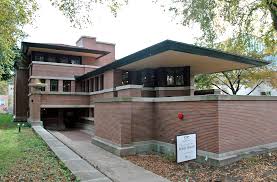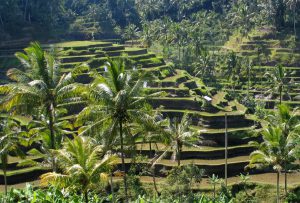An Environment of Inspiration
Next week I will be backpacking in the Grand Canyon. A group of friends and I are spending five days exploring the canyon; one of the world’s most popular natural wonders. According to the National Park Service, in 2018, Grand Canyon National Park attracted 6.3 million visitors, contributing $1.2 billion to the local area, and a cumulative $40.1 billion economic boost to the surrounding gateway communities.
Natural environments are significant contributors to our cultures. Although we have an economic metric attributed to Grand Canyon National Park, its overall cultural value is eclipsing. Natural environments provide enormous cultural benefits. We refer to these benefits as cultural ecosystem services. Unlike provisional ecosystem services, these benefits are non-material.
Cultural Ecosystem Services
Our environment provides ecosystem services vital to global social, economic, and environmental longevity. These services are interconnected with one another and any disruption has resonating impacts. We organize ecosystem services into four distinct categories: supporting, regulating, provisioning, and cultural services. Previous articles in the “Beyond the Air We Breathe” series introduced ecosystem services and details of the regulating and provisional services.
The next installment of the series dives deeper into the cultural ecosystem services. The Food and Agriculture Organization of the United Nations outline four cultural services provided by our environment: recreation, tourism, the arts, and spirituality.
Recreation & Tourism
Recreation and tourism are a major component of cultural ecosystem services. Outdoor recreation and greenspaces within urban and suburban communities have shown significant improvements to physical well-being and mental health. Our environment provides opportunities to promote different forms of outdoor recreation and greenspace interaction. Florida’s 2019 statewide recreation plan shows nearly $110 billion in outdoor recreation spending, with Alachua and Marion County contributing $697 and $225 million, respectively.
Healthy and thriving outdoor recreation industries directly benefit from a healthy environment. In turn, outdoor recreation industries have the ability to support conservation and environmental stewardship. A National Recreation and Parks Association (NRPA) study from 2017 indicated 81% of surveyed agencies provide healthy activity in nature and 71% actively protect and manage wildlife and wildlife habitats. Therefore, without healthy environments, our recreation and tourism benefits are significantly impacted.
The Arts & Humanities
Throughout history, cultural ecosystem services inspired the arts and humanities. Frank Lloyd Wright’s prairie-style, or American Century, architecture was influenced by the Midwest landscape. Another example includes, Georgia O’Keeffe’s warm and cool landscape paintings were inspired by the northern New Mexican, Abiquiu landscapes. Lastly, many of Emily Dickinson poems illustrated natural scenes to depict beautiful landscapes or express metaphors.

Spirituality & Sense of Place
Lastly, our environments provide spirituality and sense of place as part of the cultural ecosystem services. A notable example is the Bali Subak system, which is the Balinese manifestation of Tri Hita Karana, or Three Causes of Prosperity. Tri Hita Karana refers to three relationships, including the Palemahan, or relationship with the natural sphere. The Balinese Subak system has become an important irrigation system for the island’s rice paddies that are directly linked to spirituality and sense of place.

Heading into Your Community
Cultural ecosystem services may or may not have a traditional economic value, but they contribute to invaluable benefits associated with outdoor recreation, tourism, arts, and spirituality. Therefore, the non-material benefits received from our environments are just as valuable as provisional or regulating ecosystem services.
Throughout our community, the limitless benefits of ecosystem services exist. As we continue the series together, explore your neighborhood and community. What ecosystem services do you recognize and how different would your environment and community be without them? As always, I’m rooting for you. If you have any questions, feel free to reach out to UF/IFAS Extension Alachua County.
Click HERE for the Fifth article in the Beyond the Air We Breathe Series on Supporting Ecosystem Services.
Post One: The Limitless Benefits of Our Environment
Post Two: Regulating Ecosystem Services
Post Three: Provisioning Ecosystem Services
Post Four: Cultural Ecosystem Services
Post Five: Supporting Ecosystem Services
 0
0
